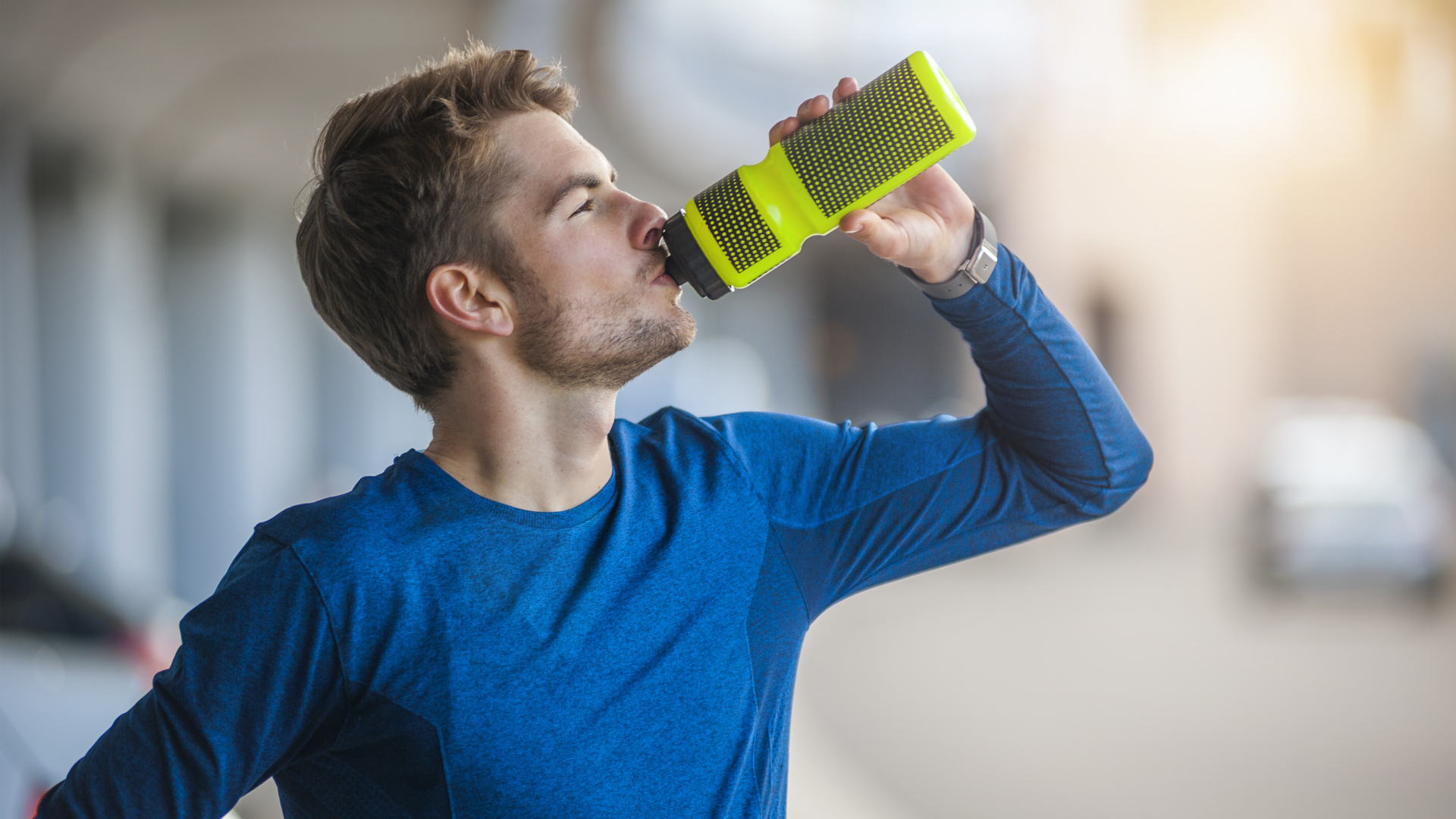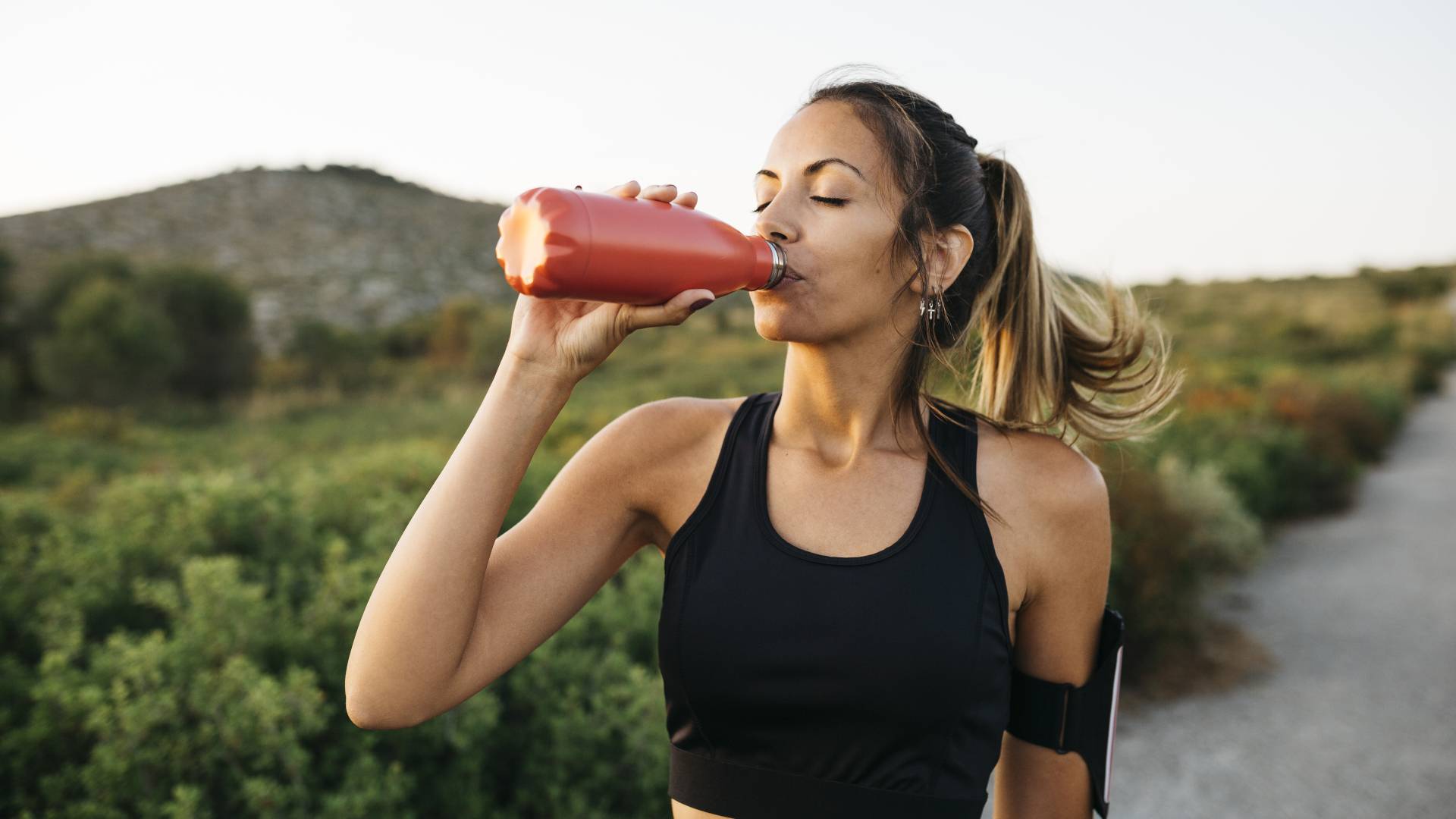What are isotonic drinks and how do they help runners?
They’re handed out at races and advertised by sports stars. But what are isotonic drinks and why do you need them?

There are so many different types of sports drinks out there it’s easy to get confused. So what are isotonic drinks and what is each type is for? This isotonic drink explainer will set the record straight.
What are isotonic drinks?
The word isotonic means that the drink has the same concentration of salts (electrolytes) and sugar (energy) as your blood normally has, so they help to maintain optimum blood sugar and electrolyte levels. You may have seen other sports drinks labeled hypotonic, hypertonic, electrolyte and carb/energy so here’s a brief rundown of how isotonic drinks compare:
Hypotonic
Less sugar and salt (electrolytes) than your blood has, so they are absorbed fast and rehydrate you quickly with a few electrolytes and carbs for a small boost. They’re ideal for shorter runs when you need hydration but not calories, and longer races and ultras if you are eating your carbs. These may also be known as electrolyte drinks, and some will cut out the sugar altogether to make a zero calorie version just for hydration and salt replacement during or after races, especially in hot weather or for runners who sweat a lot.
Isotonic
The same sugar and salt as your blood has so they are still absorbed quite quickly and provide a good level of hydration but help out more with energy and salt levels to boost endurance during runs of an hour plus, and/or high-intensity efforts.
Hypertonic
Aka energy drinks. These have more sugar and salts than your blood does and they take longer to be absorbed because these carbs have to be processed by the gut. Hypertonic drinks are useful if you’re running an ultra and struggling to eat, however they can make you feel thirsty. They’re also good as a quick calorie boost pre-race and to speed up recovery post-race.

When to use an isotonic drink
Isotonic drinks are ideal for any runs over an hour in hot, humid conditions as they are rapidly absorbed due to having the same concentrations of salt and sugar as your blood would normally have. In helping to maintain your body’s optimum blood sugar levels they help you to boost your endurance. They’re not overly needed on shorter runs less than an hour, like perhaps a flat 5k or 10k route or race, because your muscles can hold enough fuel for 60-90 minutes of running and you can rehydrate at the end.
How often should you sip your isotonic drink?
Some runners like to take one bottle of isotonic and one bottle of energy or electrolyte drink, or even plain water. That varies the taste and you can adjust your intake to how energized or dehydrated you feel. As a general rule, choose one with natural ingredients that agrees with your taste buds and take small sips often rather than waiting until you’re really thirsty. Glugging the whole bottle in one go means your body can’t process all that fluid, sugar and salt efficiently. Always drink to your thirst and check your urine to assess whether you’re properly hydrated. Aim for the color of pale straw; if it’s dark yellow or orange drink some more.
Advnture Newsletter
All the latest inspiration, tips and guides to help you plan your next Advnture!

How to make a DIY isotonic drink
It’s very easy to make your own isotonic drink – if you are an excessive sweater or the conditions are very hot, simply add a pinch more salt. Make a 500ml water bottle with your favorite flavor of squash. Then add 2 pinches of salt and 2 tsp of sugar. Shake well and enjoy sipping it on your run.
The co-founder and former editor of Trail Running magazine, Claire now runs the YouTube channel Wild Ginger Running, creating films about trail- and ultra-running advice, inspiration, races and gear reviews. An award-winning journalist, writing for outdoor and adventure sports magazines and websites, Claire's first book, The Ultimate Trail Running Handbook (5k to 50k), is out now. Her second, The Ultimate Ultra Running Handbook (50k to 100 miles), is out Autumn 2024. Claire also speaks and presents at events and races.

